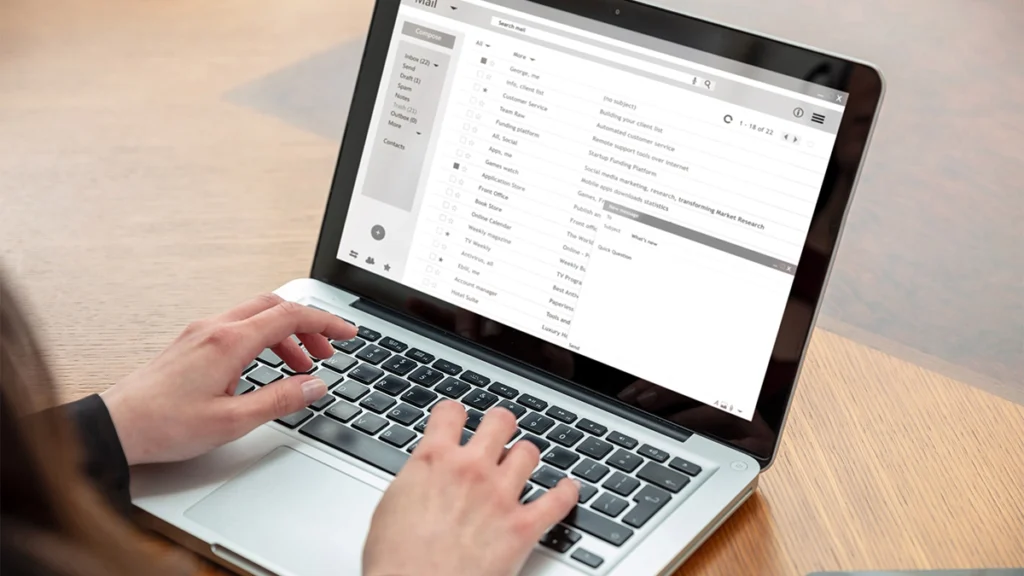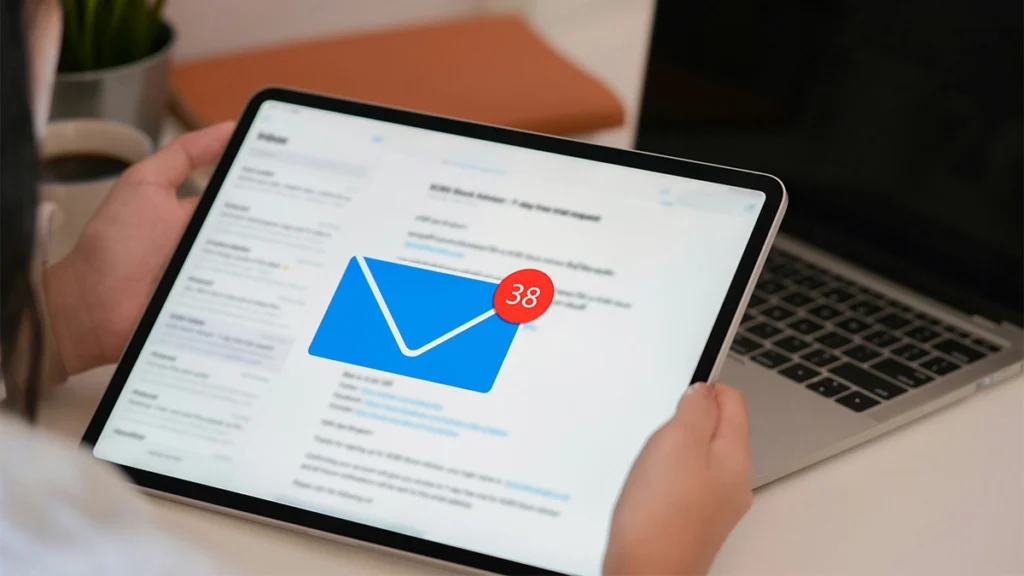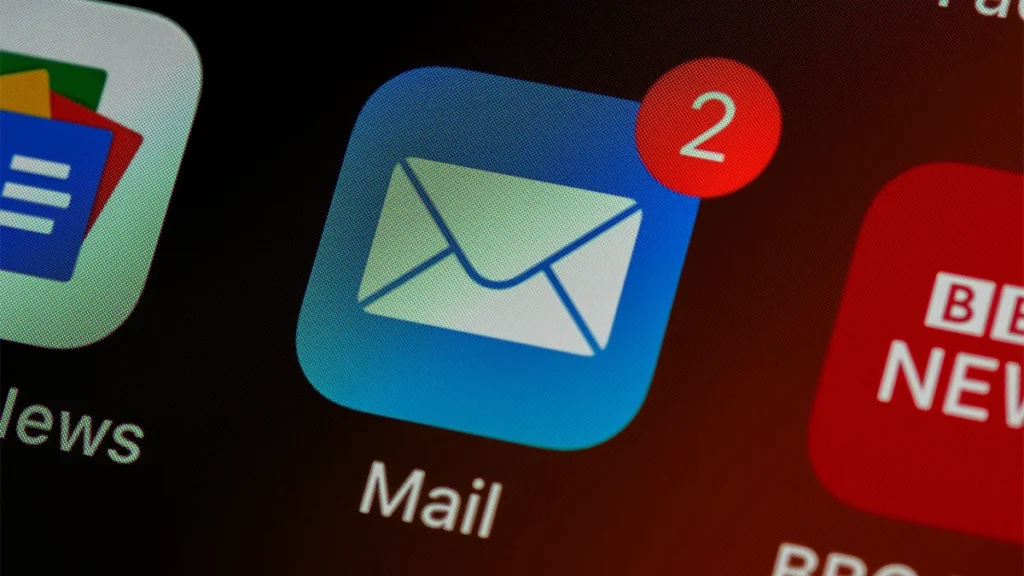With social media evolving daily, AI changing how we work, and inboxes more crowded than ever, it’s no surprise many small business owners are asking: Is email marketing dead in 2025?
The short answer? No.
But the long answer is a bit more nuanced.
Email marketing isn’t dead—but it has changed. And if you’re still using the same approach you did five years ago, your results probably aren’t what they used to be.
In this post, we’ll break down why email is still a powerful tool, what’s changed in 2025, and how small businesses can adapt to make it work better than ever.
- Why People Think Email Marketing Is Dead
- The Data: Is Email Marketing Still Effective in 2025?
- What’s Changed in Email Marketing
- Why Email Still Works for Small Businesses
- What Kind of Emails Should Small Businesses Send?
- Tools to Get You Started (Without the Headache)
- What Can People Do to Start Building Their Email List?
- What Are Some of the Common Mistakes to Avoid?
- So, Is Email Marketing Dead in 2025?
Why People Think Email Marketing Is Dead
Let’s face it—your inbox is probably a mess. Hundreds of unread newsletters, promotions, and follow-ups that you’ll “get to later.”
So it’s easy to assume that your customers feel the same. And maybe they do. But that doesn’t mean email marketing is useless. It just means lazy email marketing doesn’t work anymore.
Here are a few common reasons people assume email is finished:
- “No one opens emails anymore.”
- “Everything’s on social media now.”
- “AI writes everything. It all feels the same.”
- “Email lists are expensive and hard to grow.”
But behind each of these objections is an opportunity—if you approach email the right way.
The Data: Is Email Marketing Still Effective in 2025?
Let’s look at some quick stats from this year:
- Average email open rate in 2025: 33% across all industries (higher in B2C and niche sectors).
- ROI for email marketing: £35-£42 return for every £1 spent—still one of the highest in digital marketing.
- Email is still preferred for promotions, receipts, and business communication, even among Gen Z.
So no, email isn’t dead. But your strategy might be.
What’s Changed in Email Marketing (And What You Should Do About It)
If you’ve tried email marketing and felt disappointed, it’s probably because the approach wasn’t right for 2025. Here’s what’s changed—and how to adapt:
1. Inbox Overload Is Real
Your audience is bombarded with emails daily. If yours doesn’t stand out or offer immediate value, it’s ignored—or worse, unsubscribed from.
What to do:
- Write human, relatable subject lines
- Keep your emails short and skimmable
- Use segmentation—don’t send the same thing to everyone
2. Personalisation Is Now Expected
“Hey there!” doesn’t cut it anymore. Your readers want content that feels tailored to them.
How to personalise better:
- Use first names (if you have them)
- Recommend products or content based on previous behaviour
- Send different content to different segments (e.g. new vs loyal customers)
3. Design Matters More Than Ever
If your emails look like they were built in 2012, they’ll likely get deleted. With mobile-first design now the norm, your emails need to be visually clean, responsive, and easy to read.
Best practices:
- Keep layouts simple
- Use large buttons and clear CTAs
- Test how emails look on mobile before sending
4. Trust Is Crucial
Your audience is savvier than ever. They know when they’re being sold to—and they don’t want to be treated like a number.
Tips for building trust:
- Be consistent but not spammy (aim for 1–2 emails per month unless it’s time-sensitive)
- Be transparent about what people are signing up for
- Don’t add people to your list without permission
5. AI Is Changing the Game
Yes, AI tools like ChatGPT can help write emails faster. But if everyone’s using AI, your emails need a human touch to stand out.
Use AI to:
- Brainstorm subject lines
- Speed up writing drafts
- Analyse performance
But always:
- Add your brand voice
- Keep it personal
- Edit like a human
Why Email Still Works for Small Businesses
Now that we’ve covered what’s changed, let’s talk about what still makes email marketing incredibly valuable, especially for small businesses and startups.
1. You Own Your Email List
Social media algorithms change constantly. Platforms come and go. But your email list is yours. It’s one of the only digital assets you fully control.
Building a list gives you direct access to your customers, no matter what happens with Facebook, Instagram or TikTok.
2. It’s Still the Highest-ROI Channel
Compared to paid ads or SEO (which can take months), email marketing often delivers quicker results with lower investment.
A single email campaign can:
- Drive traffic to your website
- Promote a sale or service
- Bring back lapsed customers
- Boost repeat purchases
And once it’s set up, it’s low-maintenance.
3. It Builds Relationships Over Time
Social posts come and go. But email allows for a deeper, ongoing connection. You can use it to:
- Educate new customers
- Share stories about your business
- Provide helpful tips that keep you top of mind
- Introduce new products and services
When done right, email turns first-time buyers into loyal fans.
What Kind of Emails Should Small Businesses Send?

You don’t need to be sending emails every day—or even every week. Start simple and focus on value.
Here are a few email ideas that work in 2025:
- Welcome Emails:
Introduce yourself. Set expectations. Offer something useful. - Customer Stories:
Share testimonials or before-and-after results. - Promotions and Offers:
Use sparingly. Make it feel exclusive or time-limited. - Helpful Content:
Send blog posts, guides, or tips that solve problems. - Seasonal Reminders:
Tie emails into holidays, industry trends or events. - Re-Engagement Emails:
Check in with customers who haven’t bought or opened emails in a while.
Tools to Get You Started (Without the Headache)
Not sure where to begin? There are plenty of user-friendly tools perfect for small businesses:
- Mailchimp – Easy to use, free plan available
- MailPoet – Great for WordPress users
- MailerLite – Affordable and simple
- Kit – Designed for creators and small business owners
Most platforms offer drag-and-drop builders, templates, and automation features to make your life easier.
Looking to help getting started with email marketing?
Get in touch
What Can People Do to Start Building Their Email List?
Building an email list can feel daunting at first, but it’s actually quite simple when you focus on value and trust. Here’s how to get started:
1. Add Sign-Up Forms to Your Website
Make it easy for people to join your list. Add a form to your homepage, blog posts, and contact page. Keep it short—just ask for a name and email to start.
2. Offer a Freebie or Incentive
People are more likely to sign up if they get something in return. This could be:
- A discount code
- A downloadable guide or checklist
- Early access to a new product or service
- A free consultation or trial
Even a simple “get helpful tips direct to your inbox” works if your audience trusts you.
3. Use Pop-Ups (Sensibly)
Pop-ups can be annoying if overused, but when timed well, they work. Try exit-intent pop-ups or delay triggers (e.g. after 30 seconds on a page).
4. Collect Emails at Checkout or Enquiry
If you sell online or offer services, add a tick-box at checkout or on your contact form for users to opt into marketing emails.
5. Promote Your List on Social Media
Remind your social followers they can get extra value by signing up to your email list. Link to your sign-up form in your bio or stories.
6. Use QR Codes in Real Life
Running a stall, speaking at an event, or posting flyers? Add a QR code linking to your sign-up page. It’s an easy way to collect emails offline.
What Are Some of the Common Mistakes to Avoid?
Email marketing can be powerful—but only if you avoid a few common traps. Here’s what small businesses often get wrong (and how to fix it):
1. Adding People Without Permission
Never add people to your email list without their consent. It’s not just bad practice—it’s illegal under GDPR. Always use double opt-ins or clear sign-up forms.
2. Sending Too Often (or Not Enough)
Bombarding people with emails every few days will lead to unsubscribes. But going quiet for months makes people forget who you are. Find a balance—1–2 emails per month is a good starting point.
3. Ignoring Mobile Optimisation
Over 60% of emails are opened on phones. If your email doesn’t look good on mobile, it’ll be deleted fast. Use responsive templates and keep text readable.
4. Being Too Salesy
If every email is “Buy Now!” or “50% Off!”, people will tune out. Instead, focus on helping first—educate, inspire, or entertain. Then promote when it feels natural.
5. Using Vague Subject Lines
If your subject line doesn’t spark curiosity or offer value, your email won’t get opened. Avoid spammy terms like “You won’t believe this!” and focus on being clear and useful.
6. Not Measuring Results
If you don’t track what works, you won’t improve. Monitor open rates, click rates, and unsubscribes. Small tweaks (like subject lines or send times) can make a big difference.
So, Is Email Marketing Dead in 2025?
Let’s wrap it up.
Is email marketing dead in 2025?
Absolutely not.
But the old way of doing it—sending generic emails to everyone on your list, without thought or strategy—that’s definitely dead.
The key is to evolve with your audience. Be personal, useful, and human. And most importantly, be consistent.
Final Thoughts
Email marketing in 2025 is less about selling and more about connecting. For small businesses and startups, that’s actually a good thing. You don’t need a huge list, big budget or fancy design team. You just need to show up with value and a clear message.
If you’re not sure how to start, or your current emails are getting no love—let’s talk. At 404 Marketing, we help small businesses build email strategies that work (and won’t get ignored).


